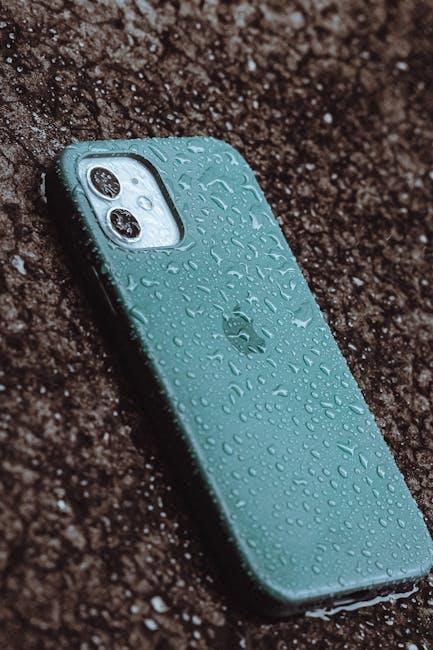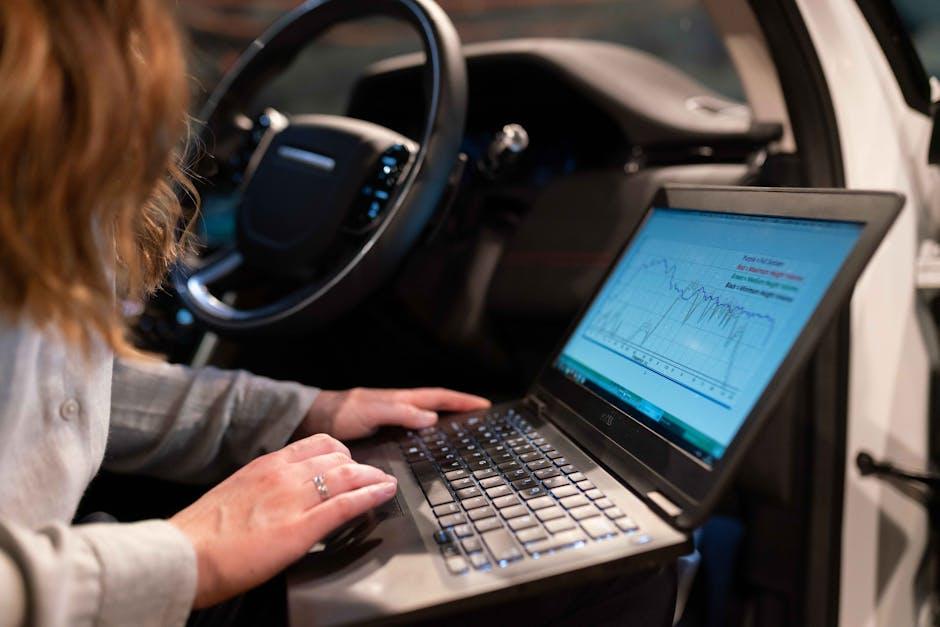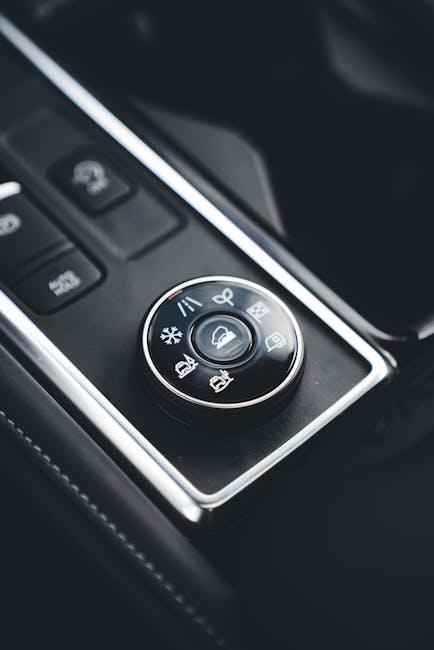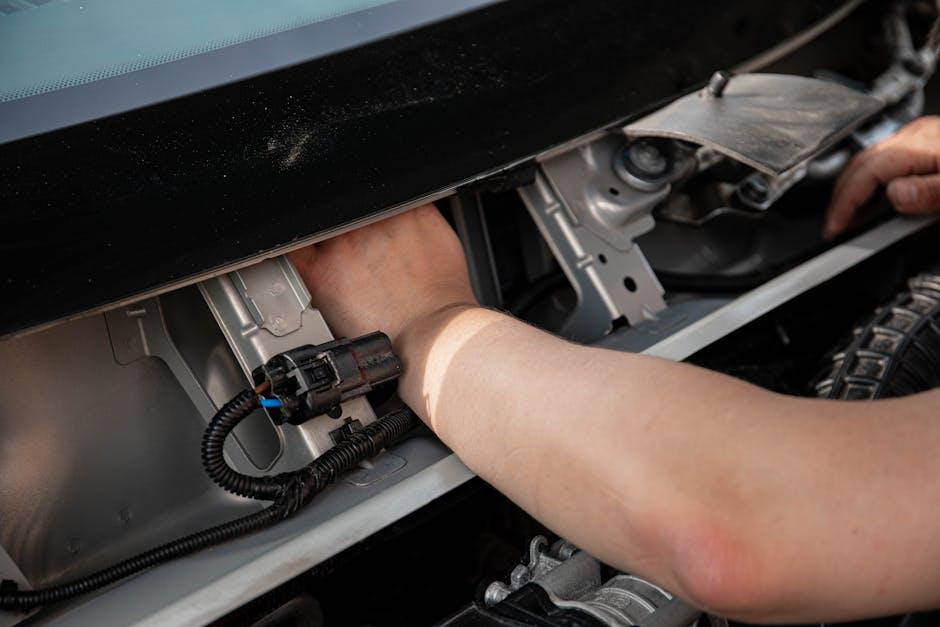In today’s digitally-driven world, our cars are more than just machines—they’re sophisticated hubs of technology. From touchscreens and GPS systems to advanced driver-assistance features, car electronics have become essential for safety, convenience, and enjoyment on the road. But like any technology, they require regular care and attention to stay in top shape. Whether you’re a tech-savvy driver or simply looking to extend the life of your vehicle’s electronic components, understanding how to maintain car electronics is key. In this article, we’ll explore top tips that will help you protect your investment, ensure reliable performance, and keep your driving experience smooth and hassle-free.
Table of Contents
- Understanding Your Car’s Electronic System and Components
- Protecting Against Moisture and Corrosion Damage
- Ensuring Proper Battery Health and Connectivity
- Routine Software Updates and Diagnostics for Optimal Performance
- Safe Handling and Installation of Electronic Accessories
- Addressing Common Electronic Malfunctions with Preventive Measures
- Q&A
- In Retrospect

Understanding Your Car’s Electronic System and Components
Your vehicle’s electronic system is the nerve center that controls everything from engine management to comfort features like climate control and infotainment. It’s composed of various components such as the ECU (Engine Control Unit), sensors, wiring harnesses, fuses, and relays, all working harmoniously to ensure a smooth driving experience. Understanding how these parts communicate through electrical signals can help you identify issues early and appreciate the complexity behind modern car functionality.
To keep these systems running efficiently, regular inspections and maintenance are crucial. Simple practices such as checking battery health, ensuring connectors are clean and secure, and avoiding overloading circuits can extend the life of your electronics. Below is a quick reference table to help you understand the primary components and their functions:
| Component | Function | Maintenance Tip |
|---|---|---|
| ECU (Engine Control Unit) | Manages engine performance and fuel efficiency | Keep software updated; avoid water damage |
| Sensors | Monitor temperature, pressure, speed, etc. | Clean regularly; replace faulty sensors promptly |
| Battery | Supplies power to all electronic systems | Check voltage and terminals for corrosion |
| Wiring Harness | Connects all electronic components | Inspect for wear or damage; secure loose wires |
- Consult your vehicle manual: Each car’s electronic setup differs; knowing specifics gives you an edge.
- Use quality replacement parts: They ensure compatibility and longevity.
- Schedule periodic professional diagnostics: Early detection of electronic faults saves money and hassle.

Protecting Against Moisture and Corrosion Damage
Moisture and corrosion are silent enemies that can severely degrade your car’s electronic systems over time. To shield your vehicle’s delicate components, always ensure that your car’s interior and engine bay remain dry. Regularly check door seals, trunk seals, and window seals for cracks or wear and replace them promptly to prevent water ingress. Additionally, applying dielectric grease on electrical connectors acts as a waterproof barrier, keeping moisture away and minimizing the chances of rust. Don’t forget to inspect and clean battery terminals, as corrosion here can lead to poor electrical performance and premature failure.
Keeping corrosion at bay also means investing in preventative solutions. Consider using anti-corrosion sprays especially formulated for automotive electrical parts, which provide a protective coating without interfering with connectivity. It’s a good practice to avoid long exposures to salty or humid environments without proper protection. Below is a quick reference table to guide your routine protective measures:
| Protection Step | Purpose | Recommended Frequency |
|---|---|---|
| Seal inspection and replacement | Prevent water leaks | Every 6 months |
| Application of dielectric grease | Waterproof electrical connectors | Annually |
| Cleaning and anti-corrosion spray on terminals | Reduce rust and improve conductivity | Every 3 months |
| Avoid exposure in harsh conditions | Minimize moisture and salt damage | Ongoing |

Ensuring Proper Battery Health and Connectivity
Maintaining a healthy battery is the cornerstone of reliable car electronics. Regularly inspect the battery terminals for corrosion, and clean them with a mixture of baking soda and water to prevent power loss and poor connections. Loose or dirty connections can cause flickering displays and erratic electronic behavior, so tightening terminal clamps and using dielectric grease can enhance contact and protect against moisture buildup. Don’t forget to test the battery’s voltage monthly; a healthy battery should read around 12.6 volts when the engine is off, ensuring it holds enough charge for all your devices.
Connectivity extends beyond just the battery — the wiring harness and fuses play critical roles in maintaining seamless electronic functionality. Regularly examine wiring insulation for cracks or wear, as exposed wires can lead to shorts or electrical fires. A well-organized fuse box with properly rated fuses enhances safety and prevents damage to sensitive components. Consider this quick reference guide to keep track of your car’s electrical checks:
| Component | Maintenance Tip | Check Frequency |
|---|---|---|
| Battery Terminals | Clean & tighten | Monthly |
| Battery Voltage | Test with a multimeter | Monthly |
| Wiring Harness | Inspect insulation | Every 6 months |
| Fuses | Replace blown fuses promptly | As needed |

Routine Software Updates and Diagnostics for Optimal Performance
Keeping your vehicle’s electronics running smoothly goes beyond basic care—it demands consistent attention to software and system diagnostics. Manufacturers frequently release software updates that enhance functionality, fix bugs, and improve compatibility with new apps or devices. Ignoring these updates can lead to sluggish response times, software glitches, or even security vulnerabilities. To stay ahead, make it a habit to check your car’s infotainment system and electronic control units for updates, either via USB, over-the-air connections, or during routine service visits.
Regular diagnostics are your vehicle’s health check, revealing hidden issues before they manifest as costly repairs. Utilize onboard diagnostic tools or professional scan devices to monitor the status of your electronics, battery health, sensor outputs, and communication protocols. Pro tip: Keep a log of diagnostic results to track any incremental changes over time. Here’s a quick guide to essential diagnostic checks for optimal performance:
- Battery Health: Voltage stability and charge cycles
- Sensor Calibration: Accuracy of parking sensors and cameras
- Communication Protocols: Status of CAN bus and LIN networks
- Software Versions: Current firmware updates and patches

Safe Handling and Installation of Electronic Accessories
When working with electronic accessories in your car, precise care during handling and installation is essential for longevity and safety. Start by always disconnecting the car battery before installation to prevent short circuits or electrical shocks. Use only the recommended tools for each component, and avoid forcing connections—electronic parts are delicate and can easily be damaged by rough handling. Remember to ground yourself to discharge static electricity, which can impair sensitive electronics.
During installation, follow the manufacturer’s guidelines meticulously, paying special attention to wiring color codes and connectors to avoid cross-wiring. To help keep track of essential practices, here’s a quick checklist:
- Disconnect battery: Prevent unwanted surges
- Use proper tools: Avoid damaging components
- Work in a static-free environment: Protect sensitive chips
- Match wiring colors: Ensure correct connections
- Secure all mounts: Prevent vibrations or dislodging
| Accessory | Installation Tip | Common Pitfall |
|---|---|---|
| Dash Cam | Route cable discreetly along frame | Pinched wires causing signal loss |
| GPS Tracker | Place under dashboard for signal clarity | Loose connections leading to power drops |
| Bluetooth Adapter | Ensure firm USB or AUX socket fit | Frequent disconnections from poor contact |

Addressing Common Electronic Malfunctions with Preventive Measures
Electronic issues in vehicles often stem from simple, everyday factors that can be easily managed with routine care. One of the most effective ways to prevent malfunctions is by regularly inspecting wiring and connectors for signs of wear, corrosion, or loose connections. Moisture intrusion is another common culprit; sealing vulnerable areas with dielectric grease can protect your system from short circuits caused by water. Additionally, using a quality surge protector during jump-starts or battery replacements helps safeguard delicate electronics against voltage spikes that can cause permanent damage.
Maintaining the battery in optimal condition is equally crucial, as a fluctuating voltage supply creates instability in the electronic control units. Balancing the electrical load by turning off unused accessories reduces strain on the system. Here’s a quick reference guide to common malfunctions and their preventive actions:
| Common Malfunction | Preventive Measure |
|---|---|
| Flickering Dashboard Lights | Check ground connections and battery terminals |
| Faulty Sensors | Clean sensors and ensure proper fitment |
| Unresponsive Touchscreen | Keep screen clean and check for software updates |
| Power Window Failure | Lubricate window tracks and inspect switches |
Q&A
Q: Why is it important to maintain my car’s electronics?
A: Car electronics control everything from engine performance to entertainment systems and safety features. Proper maintenance ensures reliability, prevents costly repairs, and keeps your vehicle running smoothly and safely.
Q: What are the most common electronic components that need attention?
A: Key components include the battery, alternator, wiring, sensors, onboard computer, and infotainment system. Each plays a crucial role and can wear down or malfunction without regular care.
Q: How often should I check my car’s battery and electrical connections?
A: It’s a good idea to inspect the battery and connections at least twice a year. Look for corrosion, loose cables, and signs of wear. Clean terminals and secure connections help maintain strong electrical flow.
Q: Can extreme weather affect my car’s electronics?
A: Absolutely. High heat can damage wiring and degrade battery life, while cold temperatures may reduce battery efficiency and affect sensor function. Protect your car by parking in shaded or sheltered areas when possible.
Q: Are there signs that my car’s electronics might be failing?
A: Yes—dim or flickering lights, unusual dashboard warning lights, inconsistent performance from electronic systems, or a battery that dies frequently all signal potential issues.
Q: How do I avoid electrical problems caused by DIY upgrades?
A: When installing new electronic devices, always follow manufacturer instructions carefully or seek professional help. Incorrect wiring or incompatible components can cause shorts, drain your battery, or damage other systems.
Q: Does regular software updating really matter?
A: Definitely. Modern vehicles rely on software for everything from engine management to navigation. Keeping software up to date ensures better performance, improved security, and access to the latest features.
Q: What role does cleanliness play in electronic maintenance?
A: Dust, dirt, and moisture can infiltrate electrical components and cause shorts or corrosion. Regularly clean your car’s interior electronics and ensure seals and covers are intact to protect sensitive parts.
Q: When should I consult a professional for electronic issues?
A: If you notice persistent warning lights, unusual behavior, or if troubleshooting yourself is overwhelming, it’s best to visit a certified mechanic. Electronics can be complex, and expert diagnostics can save time and avoid further damage.
Q: What simple habits can help extend the lifespan of my car’s electronics?
A: Besides regular checks and cleanings, avoid using electronics while the engine is off for long periods, secure loose wires or connectors promptly, and keep your vehicle’s electrical system within its recommended load limits. These small habits add up to big benefits.
In Retrospect
In the ever-evolving world of automotive technology, keeping your car’s electronics in peak condition is more than a routine—it’s a smart investment in safety, performance, and longevity. By following these top tips, you’re not just maintaining wires and circuits; you’re preserving the heartbeat of your vehicle’s modern soul. Remember, a little care today can mean smoother drives and fewer surprises tomorrow. So, stay vigilant, stay informed, and let your car’s electronics continue to drive you forward with confidence.


54 Comments
ioeutevvmtzivgivetyorjolvrgmpr
pgpsotgqnqptszgurrfzutqlsktzkn
https://shorturl.fm/kk0bm
https://shorturl.fm/pg1LC
https://shorturl.fm/YJgyO
https://shorturl.fm/SbfHw
https://shorturl.fm/TKyan
https://shorturl.fm/jbkHl
https://shorturl.fm/qwzB0
https://shorturl.fm/kDSG6
https://shorturl.fm/To9K3
https://shorturl.fm/rtX97
https://shorturl.fm/7DGmi
https://shorturl.fm/2PD9Q
https://shorturl.fm/8xD70
https://shorturl.fm/roCfh
https://shorturl.fm/rEJVO
https://shorturl.fm/PCL4Y
doch0d
https://shorturl.fm/lhczL
https://shorturl.fm/bzyjU
https://shorturl.fm/pDKBU
https://shorturl.fm/ohzZf
https://shorturl.fm/L7bnt
https://shorturl.fm/Ltiw2
https://shorturl.fm/JBg2h
https://shorturl.fm/n9kAp
https://shorturl.fm/0cVwQ
https://shorturl.fm/ZdCIk
https://shorturl.fm/vKcvI
https://shorturl.fm/9jQ5m
https://shorturl.fm/pgRIe
https://shorturl.fm/I8vDa
https://shorturl.fm/NUMgc
https://shorturl.fm/FVaDW
https://shorturl.fm/R3tTC
https://shorturl.fm/nmcRL
https://shorturl.fm/gunGT
https://shorturl.fm/jXaIe
https://shorturl.fm/CBaS5
https://shorturl.fm/vxpCE
https://shorturl.fm/pvpyZ
wpo568
https://shorturl.fm/jJDCU
https://shorturl.fm/VQQuy
https://shorturl.fm/fV1SB
yifggu
https://shorturl.fm/mc2Gi
https://shorturl.fm/sf6DU
https://shorturl.fm/Amn3c
https://shorturl.fm/sz0Wa
https://shorturl.fm/AcOfK
https://shorturl.fm/iblwa
https://shorturl.fm/LT0Ty